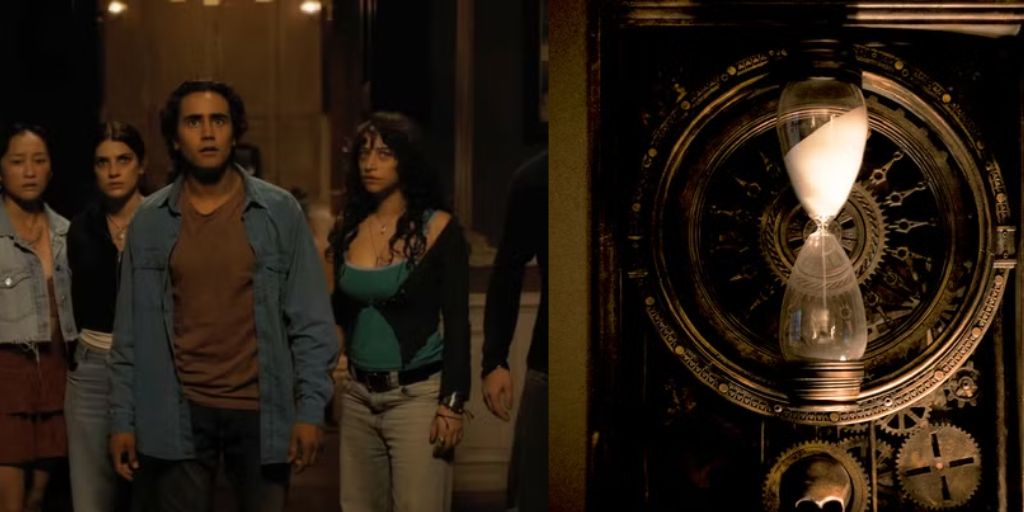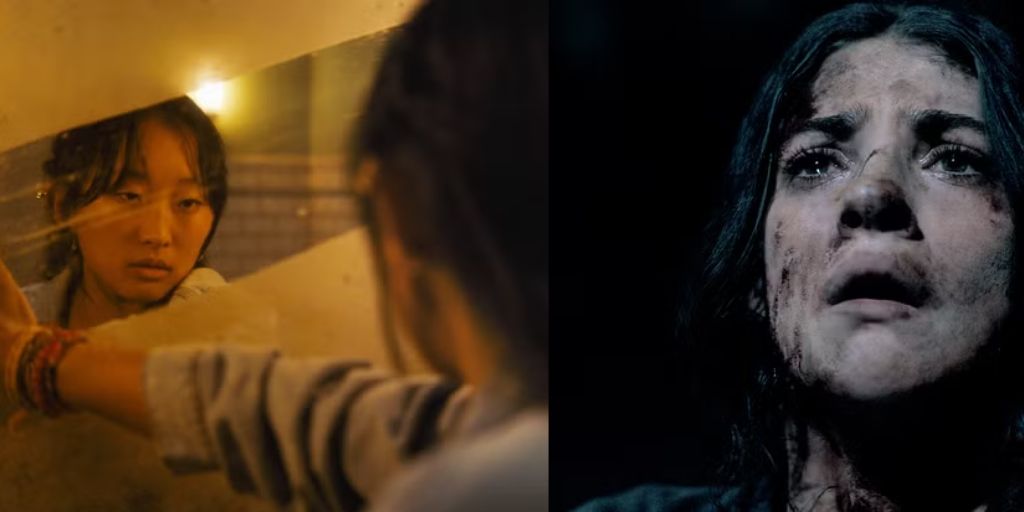Ten years after its initial release in 2015, Until Dawn, the popular interactive survival horror game, is receiving its first-ever big-screen adaptation. The game, developed by Supermassive Games, was widely praised for its decision-based gameplay and atmospheric design, which attracted both gamers and horror movie lovers alike.
Until Dawn quickly became one of the standout titles of the 2010s, selling over 4 million copies worldwide. Recently, a remastered version of the game for the PlayStation 5 was released, allowing new players to experience this thrilling story before the cinematic version hits theaters in 2025.
The Game That Changed the Genre
When Until Dawn was released in 2015, it received recognition for its unique gameplay mechanics and its ability to blend horror with a cinematic storytelling experience. The game was set in a remote mountain lodge where a group of friends reunites a year after the tragic disappearance of two sisters.
As the players guide the characters through a series of terrifying events, the story unfolds based on the choices they make. The horror was amplified by a heavy emphasis on player decisions, where even seemingly small choices could lead to different outcomes.
With a focus on suspense, jump scares, and psychological horror, Until Dawn became a hit not only with gamers but also with general horror enthusiasts.
The game’s characters were designed as relatable archetypes: the popular girl, the nerdy guy, the jock, and others, making them easy to root for—or to see fall victim to the dangers that lurked in the snow-covered woods.
These characters were brought to life by a star-studded motion-capture cast, including Rami Malek, Hayden Panettiere, and more. Their performances played a significant role in immersing players into the story, adding depth to what could have been just another generic “cabin in the woods” horror movie.
The game also featured several twists and psychological undertones, going into fears such as isolation, guilt, and the consequences of past actions.
This compelling narrative, paired with the engaging gameplay, made Until Dawn a standout title in the horror genre and a critical success. The game’s blend of interactive storytelling and traditional horror elements set the stage for a natural movie adaptation.
The Upcoming Movie
Now, nearly a decade after the game’s release, Until Dawn is being adapted into a feature film. The adaptation has generated significant buzz among fans of the game, many of whom are eager to see how the thrilling story and the beloved characters will be reimagined on the big screen.
While the movie will undoubtedly share similarities with the original game, the filmmakers are taking a different creative approach to the source material.
Until Dawn the movie will be released in theaters on April 25, 2025. The date is strategically set just a few months before the game’s 10th anniversary, which will occur in August 2025.
The film’s release will also avoid direct competition in its opening weekend—at least for now—though Marvel’s Thunderbolts will be released the following weekend, on May 2, 2025.
While the superhero blockbuster will likely draw a different audience, Until Dawn may face some competition from a more unexpected source: another video game movie, A Minecraft Movie, which will hit theaters just a few weeks before.
Despite the differences in target audiences, the release of A Minecraft Movie could potentially affect the viewership of Until Dawn, as the family-friendly movie is likely to appeal to a broader demographic, including younger audiences and gamers who might typically enjoy the horror genre.
Theatrical Release and Streaming Potential
The Until Dawn movie is set for an exclusive theatrical release upon its debut. Since the film is produced by Sony, it is expected to follow a similar release strategy as other Sony-produced films, with an eventual streaming release on Netflix.

This will likely happen after an initial period of video-on-demand (PVOD) sales. Recent Sony films like Bad Boys for Life and Madame Web followed this strategy, which has become a common model in the movie industry today.
Though it’s not confirmed yet, many fans believe that Until Dawn will eventually appear on Netflix after its theatrical run.
This would give fans of the game, who might not be able to catch the film in theaters, another chance to experience it in the comfort of their homes. For those who prefer to watch it right away, however, the movie will be available exclusively in theaters at first.
The Trailer and the Movie’s Departure from the Game
On January 16, 2025, Sony Pictures Entertainment released the official trailer for the Until Dawn movie. The trailer has already garnered attention from fans of the game, but it also raises some questions. While the film retains the essence of the game’s horror, it takes the story in a completely new direction.
The trailer reveals that the movie will introduce new characters and plot twists that were never part of the original game. Fans who are familiar with the game will notice that the plot differs significantly, particularly with the introduction of a time loop—an element that was not present in the original game.
This new direction seems to incorporate aspects of films like Happy Death Day and Groundhog Day, where the characters are forced to relive the same day repeatedly, but each time facing a new, more terrifying threat.
In the game, the plot focused primarily on a group of friends trying to survive after being hunted by a variety of horrifying creatures and forces, including a masked killer.
The addition of the time loop in the movie version is a major departure from the original source material. Whether fans of the game will embrace this bold creative choice remains to be seen, but it’s clear that the filmmakers are looking to provide a fresh take on a beloved story.
The Plot of Until Dawn the Movie
The plot of the Until Dawn movie, as revealed by Sony Pictures, follows a new group of characters rather than the original cast from the game. The official synopsis reads:
“One year after her sister Melanie mysteriously disappeared, Clover and her friends head into the remote valley where she vanished in search of answers.
Showing an abandoned visitor center, they find themselves stalked by a masked killer and horrifically murdered one by one…only to wake up and find themselves back at the beginning of the same evening.
Trapped in the valley, they’re forced to relive the nightmare again and again—only each time the killer threat is different, each more terrifying than the last. Hope dwindling, the group soon realizes they have a limited number of deaths left, and the only way to escape is to survive until dawn.”
In this movie, the central plot revolves around a time loop, where the group of friends is forced to relive the same night of terror multiple times.
Each time they face the killer, the stakes get higher, and the threat becomes more dangerous. This time loop concept introduces an interesting new dimension to the horror, one that fans of the game may not have expected.
The Cast of the Until Dawn Movie
The Until Dawn movie features a strong ensemble cast, with some familiar faces and new talent. Peter Stormare, who appeared in the game as the eerie psychiatrist Dr. Hill, will return in the movie. However, he will not reprise his original role. Instead, Stormare plays a convenience store clerk who warns the group of the danger awaiting them in the valley.
While many fans will be surprised that the original characters from the game are not present, the movie introduces a fresh set of characters.
The new characters include Clover, Max, Megan, Abel, Nina, and Melanie, who are all original to the film. These characters have been created specifically for the movie and are not connected to the video game counterparts in any way.
The roles of these new protagonists will be played by a talented cast, including Maia Mitchell (known for The Fosters), Michael Cimino (from Love, Victor), Odessa A’zion (featured in Hellraiser), Ella Rubin, Ji-young Yoo, Belmont Cameli, and William van der Vegt. With a mix of experienced actors and newcomers, the cast is shaping up to bring a new energy to the Until Dawn franchise.
The Director and Filming Process
The Until Dawn movie is being directed by David F. Sandberg, a filmmaker well-known for his work in the horror genre.
Sandberg first gained attention for his short film Lights Out, which was adapted into a feature-length film that became a hit in 2016. He has since directed successful movies such as Annabelle: Creation (a prequel to The Conjuring series) and both Shazam! films for DC.
Filming for Until Dawn wrapped on October 4, 2024, after a relatively short production period that began on August 5, 2024. Most of the movie was shot in Budapest, Hungary, which allowed for a quick turnaround compared to many other films that typically take several months to complete.
The quick production timeline suggests that the filmmakers relied on practical effects, minimizing the use of CGI. This is a welcome approach in an industry where many horror films rely heavily on green-screen technology and computer-generated effects.
The Rating and Expectations
As of now, the Until Dawn movie has not yet received an official rating from the Motion Picture Association (MPA). However, given the game’s M-rating and the nature of the source material, it is likely that the film will receive an R-rating. This would be due to the presence of violence, blood, gore, and strong language, all of which are hallmarks of the game.
Some fans are speculating that the filmmakers might aim for a more accessible PG-13 rating to broaden the movie’s appeal, similar to other video game adaptations like Assassin’s Creed (2016) and Mortal Kombat (2021), which chose to downplay some of the more intense elements of their source material to attract a larger audience.
However, an R-rated film would likely be the best way to maintain the dark, mature tone that made the original game so compelling.




